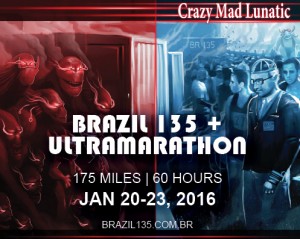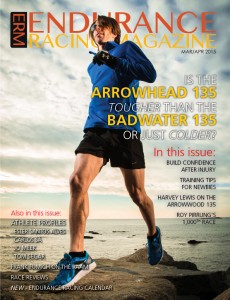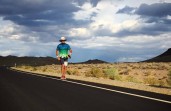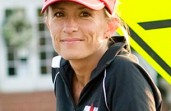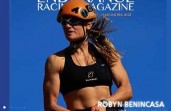Fighting fad diets and donning running shoes in the nick of time, this food-fitness guru guides you on the path to smart eating for fast racing.
By Chelsea H. Bryan
Crystal Witte, R.D., is a dietitian at Riverside Wellness and Fitness Center in Newport News, Va., and an Ironman triathlete. She’s competed in 4 ultra marathons (three 50K races and one 50-miler), one Ironman triathlon (140.6 miles), 4 half Ironman races (70.3 miles), 1 open marathon (26.2 miles), and many other half marathons and shorter races.
Witte provides advice on what you need to be eating on race day, during training weekends, and, really, all the time. Witte is a pro at cutting down “fad diets,” and building up the triathlete’s triumvirate: carbohydrates, lean protein and healthy fats— in that order.
Part I: The athlete, the woman
ERM: What turn of events led you to race ultra distances?
 I was a sophomore in college at Liberty University and decided to take a 1-credit elective course, Advanced Running. The professor was well-known ultra running legend David Horton. As a class requirement, we had to complete an ultra marathon (any distance longer than a road marathon of 26.2 miles; typically distances of 50K, 50 miles, 100K or 100 miles). In order to pass the class, I ran a 50K (31 miles) race later that semester — and finished! I went on to run several more ultra marathons, including a 50-miler. A year later, I completed my first triathlon (swim, bike, run) and ended up completing an Ironman triathlon (2.4-mile swim, 112-mile bike, 26.2-mile run) a few years later!
I was a sophomore in college at Liberty University and decided to take a 1-credit elective course, Advanced Running. The professor was well-known ultra running legend David Horton. As a class requirement, we had to complete an ultra marathon (any distance longer than a road marathon of 26.2 miles; typically distances of 50K, 50 miles, 100K or 100 miles). In order to pass the class, I ran a 50K (31 miles) race later that semester — and finished! I went on to run several more ultra marathons, including a 50-miler. A year later, I completed my first triathlon (swim, bike, run) and ended up completing an Ironman triathlon (2.4-mile swim, 112-mile bike, 26.2-mile run) a few years later!
ERM: Did you have any athletic experience prior?
I was on the swim team during my childhood and also played basketball. It was in my eighth-grade year that I noticed I enjoyed running for basketball (for cross training) more than playing ball, so I decided to drop that and focus on indoor and outdoor track and cross country. Although I was relatively competitive, I wasnt fast enough to qualify for the state cross country and track meet; it wasnt until college that I started running longer distances and broadening my experience in long-distance racing.
ERM: What do you do when it begins snowing while training or racing?
When I was going to school at Virginia Tech, we would have several snows each winter. During these times, I would ride my bike on an indoor trainer and run on the treadmill. Fortunately this would be for only a few days, and not months like for those who live farther north.
ERM: Have you ever done any snow sports, or considered trying any?
I have never competed in snow sports, but I always thought it would be fun to train for cross-country skiing. It is a wonderful cardiovascular exercise, without placing a lot of stress on the joints. If I had grown up in a colder climate where cross-country skiing is widespread, I would have loved to participate in this!
ERM: Tell us about your worst racing experience.
I fractured my Greater Trochanter (hip) in a duathlon race (run, bike, run) several years ago by crashing on my bike due to wet pavement. That was a painful experience, but I learned many valuable life lessons because of that trial!
ERM: Best racing experience?
I was able to win my age group at the Ironman World Championship 70.3 several years ago, which was a significant accomplishment for me. It is very rewarding to work diligently toward a goal and to see it come to fruition!
Part II: The word from a professional
ERM: What is your best advice to an endurance runner for real race time fuel?
 Endurance athletes should find a fueling plan that works well for them. The specific foods can vary from person to person, since different people have different digestive systems. For instance, the traditional pre-race pasta dinner might be a great option for many athletes, but not for those who have a difficult time digesting gluten (a protein found in wheat, barley and rye). That being said, the cornerstone of fuel (50-65 percent of total calories) should come from quality carbohydrates, particularly when training volume and intensity are high and in the few days prior to a long race. Good carbohydrate options include brown rice, potatoes, quinoa, oats, bread, pasta, veggies and fruit. Carbs are also found in milk and beans and legumes.
Endurance athletes should find a fueling plan that works well for them. The specific foods can vary from person to person, since different people have different digestive systems. For instance, the traditional pre-race pasta dinner might be a great option for many athletes, but not for those who have a difficult time digesting gluten (a protein found in wheat, barley and rye). That being said, the cornerstone of fuel (50-65 percent of total calories) should come from quality carbohydrates, particularly when training volume and intensity are high and in the few days prior to a long race. Good carbohydrate options include brown rice, potatoes, quinoa, oats, bread, pasta, veggies and fruit. Carbs are also found in milk and beans and legumes.
Sometimes athletes give themselves a free card to eat unlimited amounts of carbs the day or two before a race, which is not necessary and can cause gastrointestinal distress the day of the race. Instead of binging on carbs, choose foods that are a good source of carbs, and not as much fat.
ERM: What do you recommend to those going through hard times in a GI sense—those who cant seem to figure out what their stomach will accept during training for a long-distance race?
For those with IBS, I highly recommend the FODMAP elimination diet. It helps IBS sufferers pinpoint foods that are uniquely troublesome to them. This is something that has helped me with my IBS! Check out the book, IBS Free At Last! by Patsy Catsos, MS, RD, to learn more about the diet, or contact a registered dietitian for more guidance.
Any other advice, knowledge, or opinions youd like to share regarding a distance racing diet?
Avoid fad diets, especially those that eliminate entire food groups. Instead, focus on the quality of the foods chosen. Often, people fall into the trap of generalizing certain foods as being good or bad, and dont factor in the overall variety of their eating plan and the nutrient density of the foods they eat.
ERM: What foods, products or fuel work personally for you?
There are certain foods I do not digest well, such as gluten, onions, garlic and lactose (found in milk products). Fructose (the fruit sugar) in large amounts can interfere with ideal digestion for me, so I make sure to monitor my intake of these trigger foods prior to an important workout or race. However, many athletes have a gut made of steel and can digest just about anything!
The day before a race (and most days in general), Ill make sure each meal provides a good source of carbohydrates for energy (the breakdown form of glucose fuels hard-working muscles), a moderate amount of lean protein and a bit of healthy fat. Because fat is very filling and takes a long time to digest, its important to monitor ones fat intake prior to a long workout or race to allow yourself to eat adequate carbohydrates to fuel your energy needs.
For ultra runners or those competing in extra long endurance events, it can be tempting to eat whatever is available at the aid stations or fuel stops. Ultra marathons are known for providing real food, which can provide a welcome change from the monotony of energy gels and sports drinks; but it is important for athletes to choose low-fiber and low-fat options to prevent food from sitting in the stomach. Stick with salted, skinless potatoes, pretzels, gummy bears or other fat free candy like jellybeans. Some fruit is okay. Limit intake of foods with fat, like PB&J, and skip the obvious foods like bacon and biscuits altogether! Even too much fruit throughout the race can be problematic due to a large amount of fiber and fructose (the fruit sugar).


